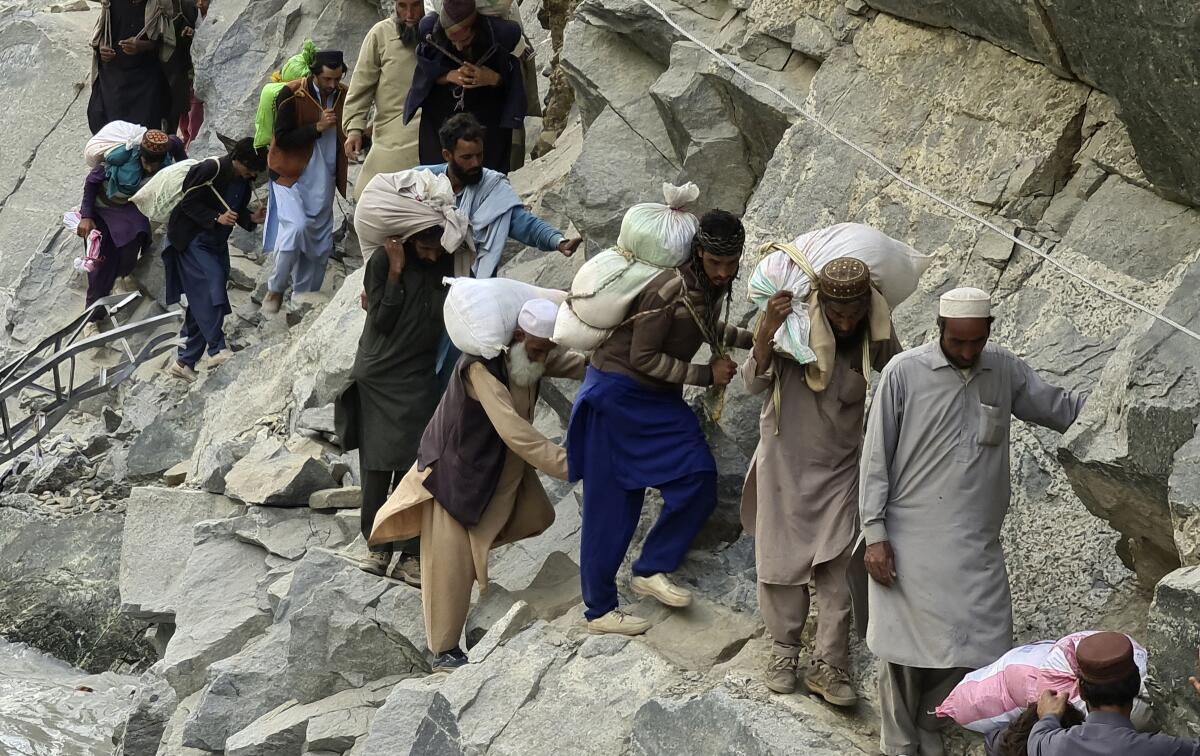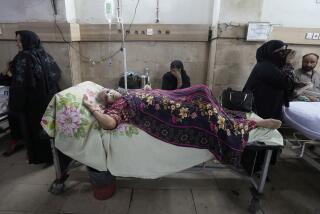Pakistan’s hope as lake fills: Flood villages to save a city

ISLAMABAD, Pakistan — Pakistani engineers cut into an embankment for one of the country’s largest lakes Sunday to release rising waters in the hopes of saving a nearby city and town from flooding as officials predicted more monsoon rain in the country’s devastated south.
While officials hope the cut in the sides of Lake Manchar will protect about half a million people who live in the city of Sehwan and the town of Bhan Saeedabad, villages that are home to 150,000 people are in the path of the diverted waters. The hometown of Sindh province’s chief minister was among the affected villages, whose residents were warned to evacuate ahead of time, according to the provincial information minister.
More than 1,300 people have died and millions have lost their homes in flooding caused by unusually heavy monsoon rains in Pakistan this year that many experts have blamed on climate change. In response to the unfolding disaster, United Nations Secretary-General Antonio Guterres last week called on the world to stop “sleepwalking” through the crisis. He plans to visit flood-hit areas Friday.
Several countries have flown in supplies, and the Pakistani government has pleaded for more help, faced with the enormous task of feeding and housing those affected, as well as protecting them from waterborne diseases.
While floods have touched much of the country, Sindh province has been the most affected.
With meteorologists predicting more rain in the coming days, including around Sindh’s Lake Manchar, and its level already rising, authorities ordered that water be released from it. Sindh’s chief minister, Murad Ali Shah, made the call even though his own village could be flooded, said Sharjil Inam Memon, the provincial information minister. The government helped residents of the villages in the waters’ path to evacuate ahead of time, said Memon.
The hope was that the water, once released, would flow into the nearby Indus River, but the lake’s level continued to rise even after the cut was made, according to Fariduddin Mustafa, administrator for Jamshoro district, where the affected villages are. Authorities have also warned residents of neighboring Dadu district that they might be at risk of more flooding in coming days.
While the release valve was created in one area, army engineers worked elsewhere to reinforce the banks of Lake Manchar, which is the largest natural freshwater lake in Pakistan and one of the largest in Asia.
In its latest report, Pakistan’s National Disaster Management Authority put the death toll since mid-June — when monsoon rains started weeks earlier than is typical — at 1,314, as more fatalities were reported from flood-affected areas of Sindh, Khyber Pakhtunkhwa and Baluchistan provinces. The report said 458 children were among the dead.
Rescue operations continued Sunday with troops and volunteers using helicopters and boats to get people stranded out of flooded areas to relief camps, the authority said. Tens of thousands of people are already living in such camps, and thousands more have taken shelter on roadsides on higher ground.
Hira Ikram, a physician at a camp established by Britain’s Islamic Mission in Sukkur charity, said many people had scabies, gastrointestinal infections and fevers.
Prime Minister Shahbaz Sharif, who is visiting flood-affected areas and relief camps daily, called for more international help Sunday.
“With over 400 [children] dead they make up one third of overall death toll. Now they are at even greater risk of water borne diseases, UNICEF and other global agencies should help,” he tweeted.
UNICEF, in fact, delivered tons of medicine, medical supplies, water purifying tablets and nutritional supplements to Pakistan on Sunday.
Alkidmat Foundation, a welfare organization, said its volunteers used boats to deliver ready-to-eat meals and other help for residents as well as animal feed on a small island in the Indus. The group also distributed food and items needed by those living by the roadside.
In the country’s northwest, in Khyber Pakhtunkhwa, the provincial disaster management authority warned of more rains, possible flash floods and landslides in the coming week in Malakand and Hazara districts. Taimur Khan, spokesman for the authority, urged residents Sunday not to go to any of the areas already flooded in recent weeks.
According to initial government estimates, the devastation has caused $10 billion in damage, but Planning Minister Ahsan Iqbal said Saturday “the scale of devastation is massive and requires an immense humanitarian response for 33 million people.”
Associated Press journalists Mohammad Farooq in Sukkur, Pakistan; Asim Tanveer in Multan, Pakistan; and Riaz Khan in Peshawar, Pakistan, contributed to this report.
More to Read
Sign up for Essential California
The most important California stories and recommendations in your inbox every morning.
You may occasionally receive promotional content from the Los Angeles Times.








